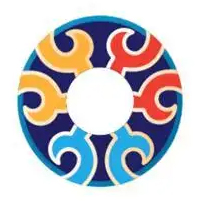The Origin and Development of Cloisonné
The Mystery of the Origin of Cloisonne
Cloisonne is a type of enamelware with a history of over 600 years. It has always been used as a luxurious royal craft due to its brilliant colors and opulent characteristics. However, experts and scholars have different views on the origin of cloisonne and there is no consensus yet.
One viewpoint suggests that the craft of cloisonne originated in China. As early as the Spring and Autumn period, the handle of King Goujian's sword was already decorated with enamel. Enamelwork was also widely used in the metal crafts of Chinese history. In particular, cloisonne flourished during the Ming Dynasty.
Another viewpoint believes that the appearance of cloisonne enamel craftsmanship in China began in the Yuan Dynasty. According to the record in "History of the Song Dynasty - Biography of Foreign Countries", Dashi Guo was the Chinese term for the Western Asia Arab region. Experts analyzed based on historical materials that around the end of the 13th century, Arab countries introduced the copper-wire cloisonne enamel craftsmanship to China. The historical materials also recorded that the Mongol army expeditioned to Western Asia and captured a large number of skilled craftsmen who then made luxurious daily necessities for the Mongol nobles in the rear. At that time, there was a popular trend of magnificent metal-wire cloisonne enamel products in the Arab region, so the craftsmen brought the firing techniques and materials to China.
Sky-high price of cloisonne enamel
In 2010, a pair of cloisonne enamel twin crane incense burners made in the reign of Emperor Yongzheng of the Qing Dynasty sold at a sky-high price of 129 million Hong Kong dollars at a Sotheby's auction in Hong Kong, setting the highest record of all previous cloisonne enamel auctions.
According to researchers, it was speculated that this pair of objects was specially customized by Prince Hongli for his father Emperor Yongzheng's birthday, hence the grand shape of a large crane and a small crane. Cranes symbolize peace and longevity, and the peach in the mouth of the big crane represents longevity. The peach is a gift from the small crane to the big crane, expressing Hongli's wishes for his father Yongzheng's longevity.
The largest cloisonné in history.
Emperor Qianlong ordered the production of twelve huge filigree enamel pagodas in 1774 and 1782 respectively. These pagodas were displayed in the Fanhua Building and Baoxiang Building inside the Forbidden City, with the same height but different shapes. These pagodas cost nearly 700,000 taels of silver and require the cooperation of many craftsmen to complete the complex craftsmanship.
As the pinnacle of cloisonné craftsmanship, these pagodas showcase the prosperous power of the country and the mature enamel craftsmanship during the Qianlong period.
The supreme skill of cloisonné is not passed down.
Emperors of the Ming and Qing dynasties set up specialized workshops for producing cloisonné metalware for royal use. The production process of cloisonné is very complicated, involving 108 steps. Royal artisans had to collaborate and specialize in one or two steps for their entire lives. This not only ensured the perfection of royal cloisonné objects but also effectively protected this court art from being passed on.
In the Qing Dynasty, cloisonné became a state gift.
In 1793, the British envoy presented an astronomical, geographical, and musical clock representing advanced technology to Emperor Qianlong. In return, Emperor Qianlong rewarded the envoy with cloisonné objects for court use.
This marked the beginning of cloisonné, as a representative of traditional Chinese art, appearing in various diplomatic occasions. With its typical Chinese cultural characteristics, cloisonné immediately gained the favor of foreign envoys and was showcased on the international stage. Until now, cloisonné has become the preferred national gift of the Chinese nation.
In 1908, the Qing government included cloisonné bottles and cups as part of the "national gift" presented to the U.S. Great White Fleet.

